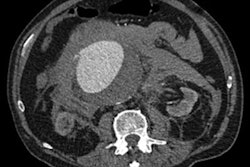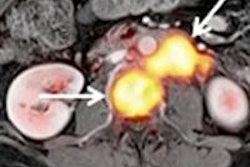Dear AuntMinnieEurope Member,
Very little reliable information exists about the error rate in reports by teleradiologists, so a new audit involving nearly 5,000 patients is bound to generate huge interest.
Overall, the teleradiologists did not fare well. Lack of access to patient records, prior imaging, and supporting information from clinicians affected their performance. Also, the teleradiologists often were dealing with complex studies outside their general field of knowledge. For more, go to the CT Community, or click here.
It's very unlikely a new dance movie about x-ray will win an Oscar when the ceremony takes place in late February, but it looks set to boost the profile of radiology on social media. Supported by Birmingham Children's Hospital in the U.K., the movie shows how art can have a valuable role when it comes to understanding technology. Find out more here.
Another creative project has come from Jena University Hospital in Germany. The radiology department's 40-page guide for patients has won awards for its plain language and strong message. Click here for the full details.
Meanwhile, cardiac imaging researchers from Belgium made a big impact at the recent RSNA 2016 meeting. They found that fractional flow reserve CT can reduce unnecessary catheterizations by 80%, while also cutting costs and the risks of morbidity and mortality. They think the new method may become the gateway to the cath lab. Visit the Cardiac Imaging Community, or click here.
At the same congress, a group from Essen, Germany, presented important findings about the ability of PET/MRI to accurately stage tumors of the uterine cervix. Get the full story in the Molecular Imaging Community, or click here.
Finally, don't miss our Case of the Week by Dr. Fatih Seker from Heidelberg University Hospital in Germany. He describes the case of a 7-year-old girl referred for MRI because she has had left-sided, painful, hyperthermic buccal swelling. Test yourself here.



















